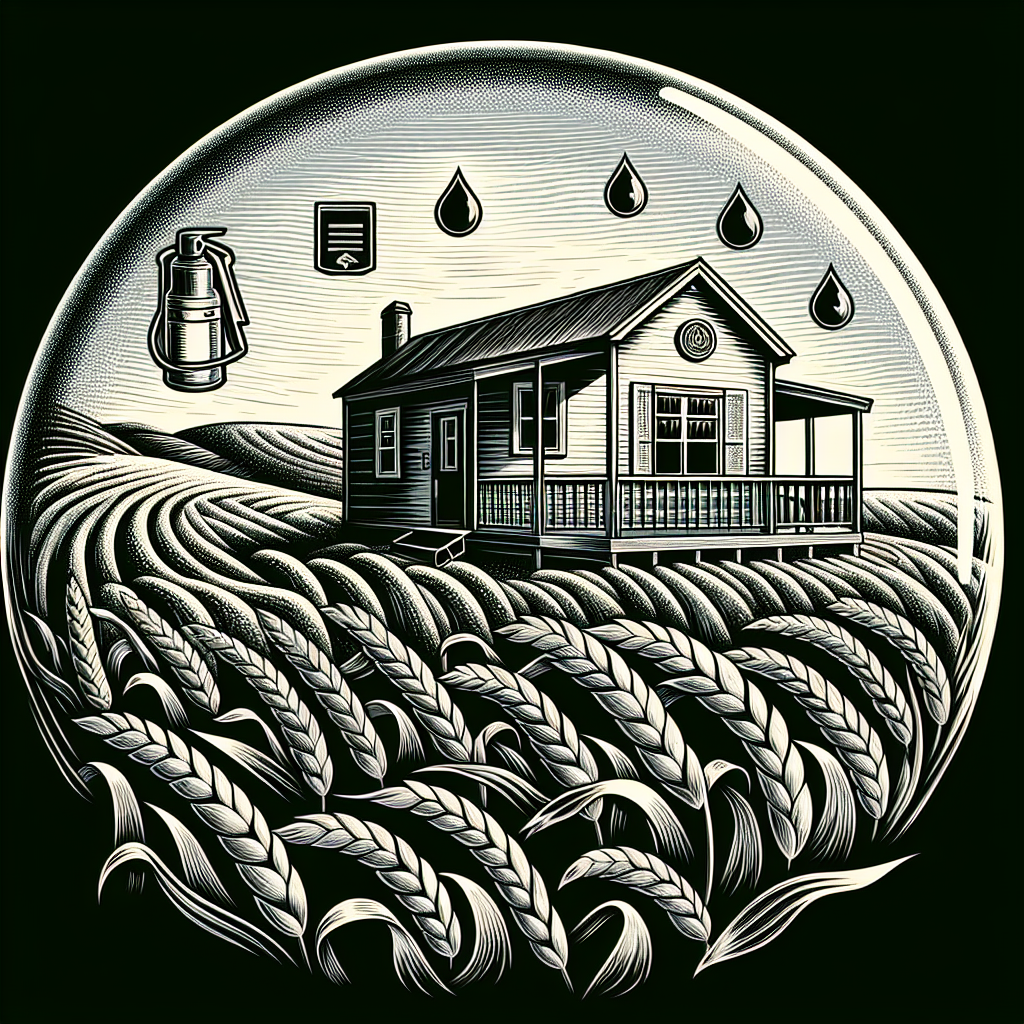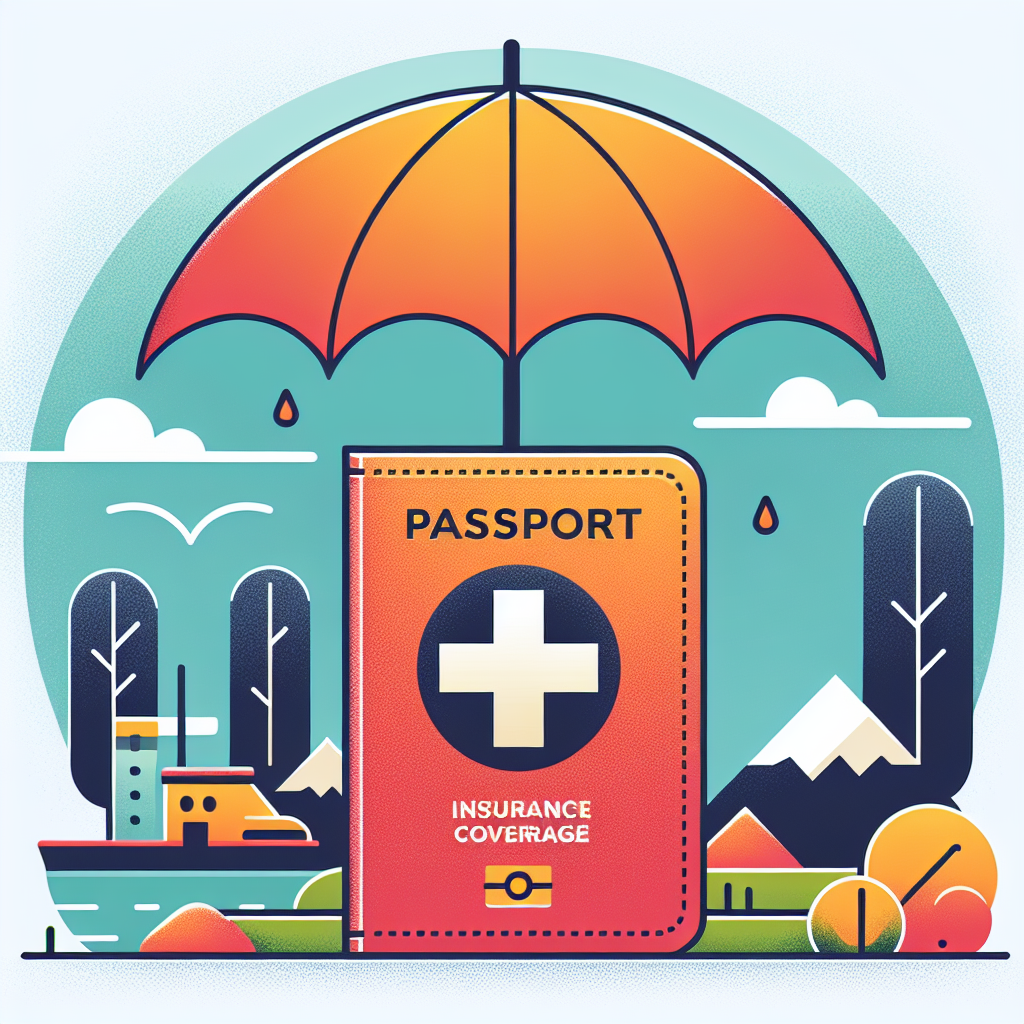Filed under Home Insurance on
State Farm Mobile Home Insurance Coverages Guide

If you own a manufactured or mobile home, finding the right protection can feel complicated. Construction methods, anchoring systems, local wind zones, and community rules all affect your coverage needs. This State Farm Mobile Home Insurance Coverages Guide breaks down the essentials in plain language, so you can confidently tailor a policy to your home, budget, and risk profile. You’ll learn how core protections work, what add-ons are worth considering, which losses are commonly excluded, and how to save without leaving gaps. Coverage varies by state and policy form, so always review your declarations and talk with a licensed agent before making decisions.
Mobile Home Insurance, in Context
Manufactured homes (built to the national HUD Code after June 15, 1976) and mobile homes (pre-1976) differ from site-built homes in construction and anchoring. Those differences matter to insurers—especially in wind-prone or wildfire-exposed areas—so the policy language and underwriting rules aren’t identical to a standard homeowners policy.
In many states, State Farm mobile home insurance mirrors the structure of a traditional homeowners package, but with endorsements and eligibility requirements tailored to manufactured housing. This State Farm Mobile Home Insurance Coverages Guide focuses on how those building-specific nuances influence coverage choices and costs.
Core Coverages You’ll See on a Quote
While policy names and forms vary, most mobile home policies include six fundamental protections. Understanding these helps you set smart limits and avoid unpleasant surprises.
Dwelling (Coverage A)
Dwelling coverage insures the structure itself—the roof, exterior walls, built-in components, attached decks, and porches—against covered perils such as fire, wind, and theft-related damage. The limit you choose should reflect the cost to rebuild your home with materials of like kind and quality, not the purchase price or loan balance. Many mobile home policies default to actual cash value (ACV) unless you add replacement cost provisions; ACV subtracts depreciation for age and wear, which can significantly reduce a payout on older homes. Ask your agent whether replacement cost options are available for your dwelling and what criteria apply.
Other Structures (Coverage B)
This covers structures not permanently attached to the home, such as a detached shed, carport, or fence. The limit often equals a percentage of the dwelling coverage (for example, 10%), but you can usually adjust it if you have larger outbuildings. Document what you own and confirm whether aluminum carports or custom skirting are treated as attached or separate in your policy.
Personal Property (Coverage C)
Personal property coverage protects your belongings—furniture, electronics, appliances not built in, clothing, and more—anywhere in the world. Many base policies insure contents at ACV unless you add replacement cost coverage for personal property. Note special sublimits for items like jewelry, watches, firearms, collectibles, and cash; you may need scheduled coverage for higher values. A quick home inventory with photos and serial numbers makes claims smoother and can help you right-size your limit.
Loss of Use (Additional Living Expense)
If a covered loss makes your home uninhabitable, this coverage helps pay for temporary housing and extra living costs (like meals and laundry) while repairs are made. Confirm the time or dollar cap and whether your policy pays on an actual expense incurred basis. Mobile homes exposed to severe storms may face longer repair timelines; set a realistic limit accordingly.
Personal Liability
Liability coverage helps protect your assets if someone alleges you caused bodily injury or property damage, on or off premises, and you’re found legally responsible. Common scenarios include a guest slipping on steps, a tree you own falling on a neighbor’s car, or a dog bite. Typical limits start at $100,000, but many homeowners carry $300,000 to $500,000. Consider an umbrella policy if you want an extra layer of protection above your base liability limits.
Medical Payments to Others
Regardless of fault, this pays small medical bills if a guest is injured on your property. It’s not a substitute for liability but can resolve minor incidents quickly and amicably. Limits are modest, often $1,000 to $5,000.
Popular Endorsements and Add-Ons
Manufactured homes face unique risks. These optional coverages can close critical gaps. Availability varies by state and underwriting guidelines, so treat the list below as a menu, not a promise.
Replacement Cost on Dwelling
Upgrades ACV to replacement cost, reducing depreciation in a claim. This can be a difference-maker for older units or homes with upgraded materials. Some carriers require the home to meet age and condition standards to qualify.
Replacement Cost on Personal Property
Pays to replace stolen or destroyed items with new equivalents, subject to policy limits and terms. Especially valuable for electronics, furniture, and clothing that depreciate quickly.
Extended Dwelling Coverage
Provides an extra percentage above your dwelling limit if a major event spikes reconstruction costs or you underestimated your replacement value. Availability for mobile homes may vary; if offered, it can be a safety net during high-demand rebuild periods after storms.
Water Backup
Covers damage from water backing up through sewers or drains or from sump pump failure. Standard policies typically exclude this. If your home sits lower than street level or you’ve had backups in the area, consider this add-on.
Equipment Breakdown
In some states, this endorsement covers sudden mechanical or electrical breakdown of systems like HVAC, appliances, or home electronics. It’s not a maintenance plan, but it can soften the blow of a costly failure.
Scheduled Personal Property
Specifically lists valuable items—jewelry, fine art, musical instruments—for their appraised amounts, often with broader coverage and no deductible. Review special limits in your base policy to decide what to schedule.
Golf Cart or Recreational Vehicle Liability
If you use a golf cart in your community or store a small recreational vehicle, talk to your agent about coverage options and restrictions. Liability gaps are common here.
Trip Collision or Transit Coverage
If you plan to move your manufactured home, you may be able to add a short-term endorsement that covers collision or upset during transit. This is specialized and requires coordination with qualified movers.
Ordinance or Law Coverage
Helps pay the extra cost to bring your home up to current building codes after a covered loss. Manufactured housing codes evolve, so this coverage can be valuable, especially in older units.
Earthquake and Flood
Earthquake is usually an optional endorsement; flood is almost always excluded and must be purchased separately, often through the National Flood Insurance Program. If your park sits near a river, coastline, or floodplain, a separate flood policy is crucial.
What Typically Isn’t Covered
Understanding exclusions is as important as knowing what’s covered. Policies are not maintenance contracts; they’re designed for sudden, accidental losses.
- Flood, storm surge, and most surface water events (separate policy needed)
- Earth movement, landslide, or sinkhole (may require an endorsement or separate policy, depending on state)
- Wear and tear, deterioration, corrosion, rot, or rust
- Mold, fungus, or wet rot except as specifically provided
- Pest or vermin damage
- Mechanical breakdown without an equipment breakdown endorsement
- Intentional loss or neglect
- Business activities conducted from home without proper endorsements
- Governmental action or ordinance unless endorsed
Pricing: What Drives the Cost
Rates reflect risk—and for mobile homes, location and construction details matter a lot. Across the U.S., homeowners insurance costs have risen in recent years due to severe convective storms, wildfire exposure, inflation in building materials, and reinsurance pressures. Manufactured housing is part of that trend.
- Location and wind zones: HUD Wind Zones I, II, and III influence expected wind speeds. Coastal and tornado-prone counties often see higher premiums and separate wind/hail deductibles.
- Fire protection class: Distance to the nearest fire station and hydrant can materially affect rates.
- Home age and condition: Roof type (shingle vs. metal), age of roof, anchoring/tie-down systems, and skirting all matter to underwriters.
- Coverage limits and deductibles: Higher limits and lower deductibles increase premiums. Special deductibles for wind/hail or named storms can reduce base cost but increase your out-of-pocket exposure.
- Claims history: Prior losses can impact eligibility and price.
- Community vs. private land: Homes in managed communities with protective standards may receive more favorable pricing than those on isolated lots.
- Credit-based insurance score: In many states, this may influence your rate, where permitted by law.
- Security and fire mitigation: Monitored alarms, smoke detectors, fire extinguishers, and upgraded roofs can help.
Industry data from organizations like the Insurance Information Institute and the National Association of Insurance Commissioners indicate that wind and water-related claims remain the costliest drivers of losses. For manufactured homes, securing the structure, improving roof resilience, and maintaining defensible space in wildfire areas are practical risk-reduction steps that can also support insurability.
Setting Smart Limits Without Overspending
Choosing the right numbers can feel like guesswork. Align your limits with realistic replacement and living costs, not just the amount your lender requires.
- Dwelling: Request a rebuild estimate from your agent, dealer, or manufacturer using your model, dimensions, and features. Update the figure if you’ve added porches, carports, or custom skirting.
- Other structures: Inventory sheds, fences, and detached carports. Raise the limit if the default percentage doesn’t cover them.
- Personal property: Complete a room-by-room inventory. Keep receipts and serial numbers for electronics and appliances. Decide whether replacement cost for contents is worth the premium.
- Loss of use: Price short-term rentals in your area to estimate what a month or two could cost. Major catastrophes often extend repair timelines.
- Liability: Consider your net worth and potential risks (dogs, pools, home-based business). An umbrella policy can be cost-effective for higher limits.
Deductibles: Flat vs. Percentage
Your deductible is what you pay before insurance kicks in. Many mobile home policies allow a flat deductible (e.g., $500, $1,000, or $2,500). In wind-prone areas, you may face a separate wind/hail or named-storm deductible calculated as a percentage of your dwelling limit (commonly 1% to 5%). A $100,000 dwelling limit with a 2% wind deductible means you’d pay $2,000 out-of-pocket for wind damage before coverage applies. Consider your emergency savings and local weather risk when choosing.
Discounts and Simple Ways to Save
Even as rates rise industry-wide, you can often trim costs by qualifying for credits and reducing risk.
- Bundle home and auto with the same carrier.
- Install monitored burglary and fire alarms; add deadbolts and smoke/CO detectors.
- Opt for a higher deductible you can afford.
- Maintain a claims-free record when possible.
- Upgrade to a fortified or impact-resistant roof if available for your model.
- Secure tie-downs and anchoring; maintain skirting; prune trees away from the home.
- Ask about community, age 55+, paperless, autopay, or early-shopping discounts if offered in your state.
Eligibility and Underwriting Considerations
Manufactured homes face specific underwriting checks. Knowing them up front can prevent last-minute surprises.
- Year built and HUD compliance (post-1976 for “manufactured” designation).
- Anchoring/tie-down systems meeting local standards; permanent steps and secure skirting.
- Roof age, material, and condition; evidence of leaks or soft spots.
- Heat sources: wood stoves or space heaters may require inspection or be ineligible.
- Dogs with a bite history or certain breeds may trigger liability restrictions.
- Distance to coast/wildfire interface; prior losses in the park or neighborhood.
- Vacancy; some policies limit or exclude coverage for long unoccupied periods.
Claims Readiness: What to Do Before and After a Loss
Preparedness translates to faster, smoother claims and better outcomes. The steps below reflect common best practices across major insurers and apply broadly to State Farm mobile home insurance.
Before a Loss
- Document your home: photos of each room, roof, underside, anchoring, and serial number plate.
- Save receipts for upgrades: roofing, skirting, HVAC, and safety devices.
- Keep an inventory of personal property in a secure cloud folder.
- Review your deductibles and coverage annually, especially after renovations.
After a Loss
- Protect the property: stop leaks, board broken windows, and prevent further damage if it’s safe.
- Document everything: take photos and videos before cleanup; keep damaged parts for the adjuster.
- Report the claim promptly via app, phone, or agent; confirm your coverage, deductibles, and next steps.
- Track expenses: save receipts for temporary lodging, meals, or emergency repairs for potential reimbursement under Loss of Use.
- Meet the adjuster prepared: have your inventory, receipts, and contractor estimates ready.
Real-World Scenarios and How Coverage Responds
Here are common losses for manufactured homes and how the policy may respond, assuming the peril is covered and subject to your limits and deductibles.
- Wind tears off part of the roof: Dwelling coverage addresses roof repairs; wind/hail deductible applies. If rain damages furniture inside, personal property coverage may respond.
- Pipe bursts while you’re at work: Dwelling pays for floor and wall repairs; personal property pays for ruined furniture; Loss of Use helps if the home is uninhabitable during dry-out.
- Break-in steals electronics and jewelry: Personal property coverage applies, but jewelry faces a sublimit unless scheduled; contents replacement cost endorsement can help.
- Sewer backs up into a bathroom: Typically excluded unless you added water backup coverage.
- Small kitchen fire: Dwelling covers structural damage; contents coverage addresses smoke-damaged items; Loss of Use may help with temporary lodging.
- Tree from a neighbor’s lot crushes your carport: Other structures coverage may respond; subrogation against the neighbor might occur if they were negligent.
Key Questions to Ask Your Agent
Use this checklist during your quote review to eliminate gray areas and tailor your plan.
- Is my dwelling insured for replacement cost or actual cash value?
- Are there separate deductibles for wind/hail, hurricanes, or named storms?
- What special limits apply to jewelry, firearms, tools, and collectibles? Can I schedule items?
- Do I qualify for water backup, equipment breakdown, or ordinance or law coverage?
- Are my tie-downs, skirting, and steps acceptable under underwriting guidelines?
- How does Loss of Use pay out, and for how long?
- What discounts can I add today to reduce the premium?
- If I move the home, can I add trip collision or transit coverage?
Emerging Trends Affecting Manufactured Home Coverage
The last few years have reshaped property insurance. Severe convective storms across the central and southern United States, more frequent hail events, and persistent wildfire seasons in the West have pressured premiums. At the same time, building materials and labor costs remain elevated in many regions, increasing the risk of underinsurance. Manufactured homeowners can respond by verifying replacement cost assumptions annually, exploring fortified roofing or impact-resistant materials, and using home-hardening practices recommended by groups like the Insurance Institute for Business & Home Safety (IBHS). In some states, carriers are also refining wind and hail deductibles and tightening eligibility in high-loss corridors, making early shopping and documentation even more important.
How This Guide Helps You Shop
Whether you’re getting your first policy or refreshing your coverage, the steps are straightforward:
- List must-have protections: dwelling replacement cost (if available), contents replacement cost, water backup, and adequate Loss of Use.
- Set realistic deductibles: balance premium savings with what you can afford out-of-pocket during a claim.
- Gather details: year, make, model, dimensions, roof type and age, tie-down specs, photos, and upgrades.
- Compare quotes apples-to-apples: same limits, deductibles, and endorsements.
- Confirm exclusions and special conditions: especially wind/hail and vacancy rules.
Bookmark this State Farm Mobile Home Insurance Coverages Guide and use it during your agent conversation to ensure you don’t miss anything important.
Frequently Misunderstood Details
- Market value vs. replacement cost: What you could sell your home for is not what it costs to rebuild, especially after a catastrophe. Insure the rebuild cost.
- Storage sheds and carports: Some policies cap other structures at a small percentage. If your carport is custom or oversized, adjust limits.
- Vacancy and short-term rentals: Many policies restrict or exclude coverage if the home is vacant beyond a stated period or rented short-term without proper endorsements.
- FEMA assistance vs. insurance: Disaster grants are limited and not a substitute for insurance. Flood coverage often requires a 30-day waiting period—plan ahead.
- Inventory value: People routinely underestimate belongings. A quick video walkthrough stored in the cloud is better than no inventory at all.
A Quick Checklist for Annual Policy Tune-Ups
- Did you replace the roof or upgrade to impact-resistant materials?
- Added a deck, awning, or carport that increases replacement cost?
- Purchased expensive electronics, tools, or jewelry that exceed special limits?
- Moved into or out of a managed community with better security or fire protection?
- Changed heat sources, added a wood stove, or altered the electrical system?
If you answered yes to any of these, schedule a coverage review. This State Farm Mobile Home Insurance Coverages Guide can serve as your reference during that conversation.
The Bottom Line
Mobile and manufactured homes are uniquely engineered. That means your insurance should be uniquely tailored, too. The right blend of dwelling coverage, contents protection, liability, and targeted endorsements will help you avoid coverage gaps while staying on budget. Revisit your policy each year, document your upgrades, and align your deductibles with your financial plan. With a clear understanding of coverage mechanics and current market trends, you’ll be better prepared for whatever comes next.
Use this State Farm Mobile Home Insurance Coverages Guide to frame your quote review, verify your deductibles, and confirm your exclusions and endorsements. If you’re ready to take the next step, gather your home details and inventory, then connect with a licensed agent to translate this guidance into a precise, state-specific policy.
This State Farm Mobile Home Insurance Coverages Guide is for educational purposes and is not a contract or offer of coverage. Policy terms, availability, and discounts vary by state and individual risk. Always consult your policy documents and a licensed insurance professional for advice tailored to your situation. When in doubt, bring this State Farm Mobile Home Insurance Coverages Guide to your meeting and use it as a checklist to ensure every key topic gets covered.





